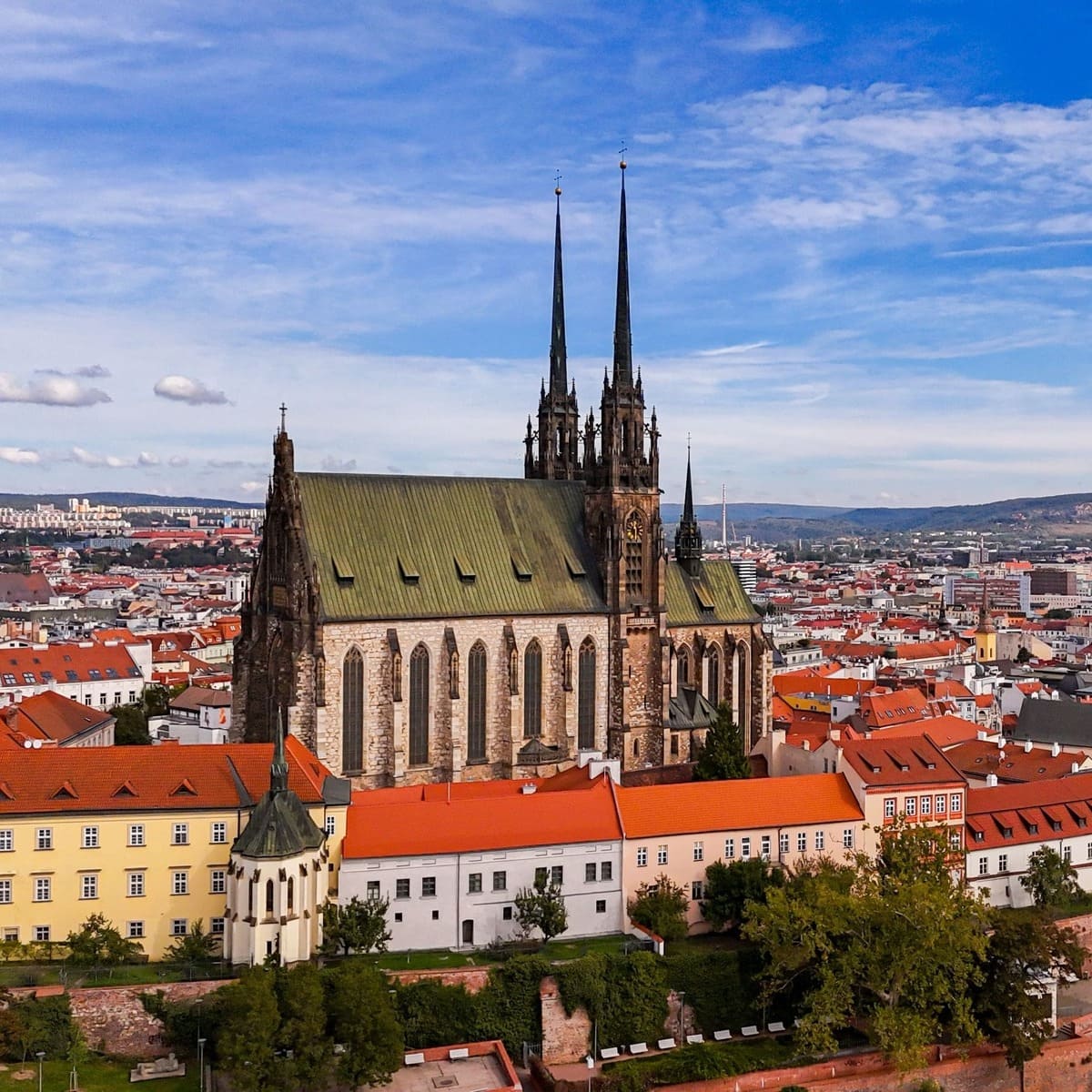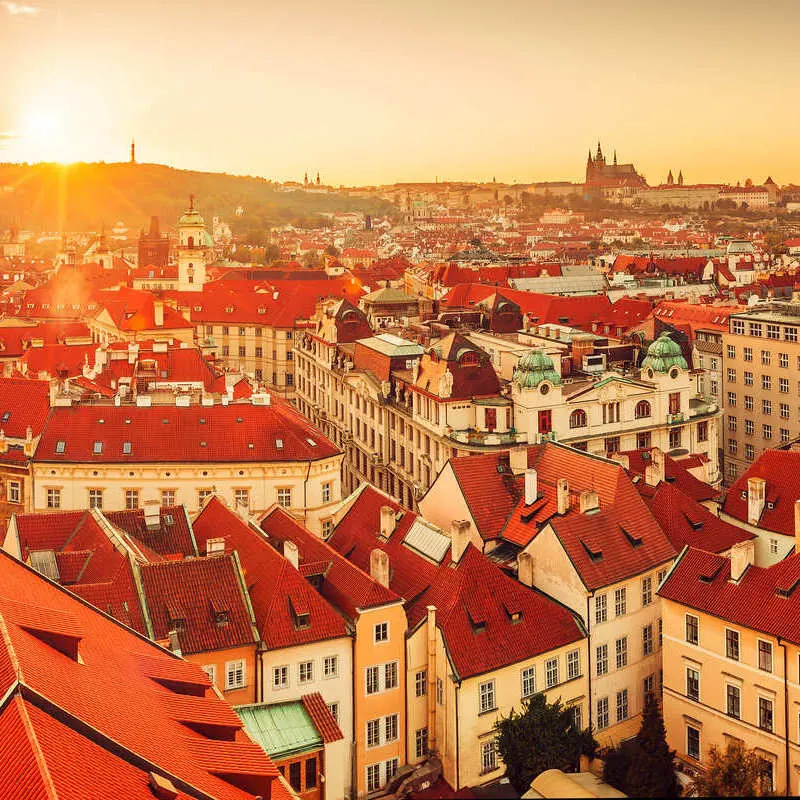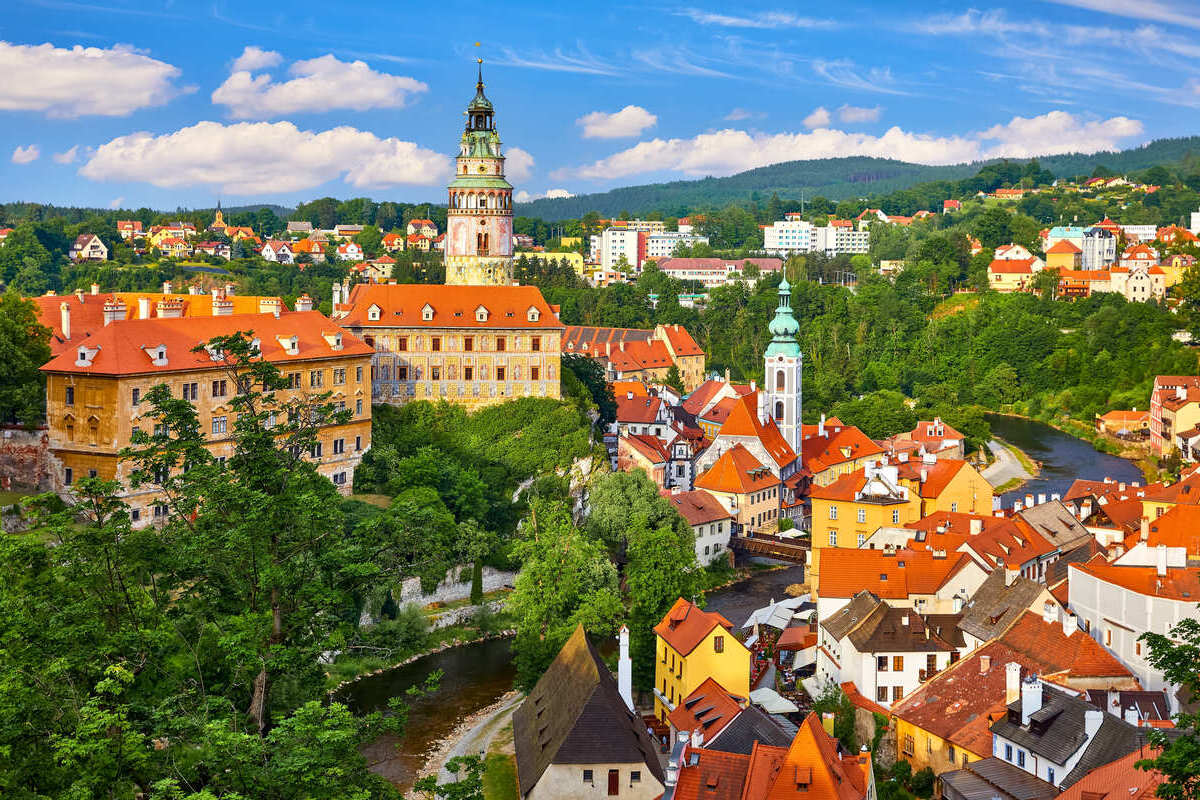
Share The Article
Some digital nomads go to Spain for the warm weather, others choose to settle in Portugal, drawn to their slower-paced lifestyle, and there’s always the odd oenophile who can’t stay away from Italy for long—but there’s one particular category of expat that has their eyes set on Czechia.
A small European country best known for its picturesque capital, Prague, it is rapidly rising in popularity as an alternative to Europe’s usual nomad hotspots.
Interestingly enough, Czechia is a landlocked country hundreds of miles away from the highly sought-after Mediterranean, and it is known for having brutal winters. Still, it ranks 5th on this year’s Global Digital Nomad Report, with a score of 90.17 out of 100.
They definitely won’t find mild weather and beaches here, so what is it about Czechia that’s suddenly so appealing?


All The Cultural Appeal You Won’t Find Back Home
If you’ve ever dreamt of waking up every day to fresh coffee in your new favorite coffee shop overlooking a cobbled street, working from an ornate public library to the chimes of belfries in the distance, and living in a literal fairytale scene, Czechia’s definitely for you.
It is a country rich in history, from the capital city of Prague to the castle-dotted hills of South Bohemia, and every storybook village in between, and regardless of where you’re relocating to, you can rest assured you’ll find the Old World allure you seek.
Of course, Prague is the most obvious example, as it’s truly one of the most beautiful cities in the Old Continent, complete with historic bridges, soaring church spires, and a monumental castle, but don’t count these other ones out just yet:


At Least 5 Large Cities To Pick From
Prague may be the only metropolis in the truer sense of the word, but there are at least 5 Czech cities with over 100,000 inhabitants that are equally promising nomad hubs. Brno, the second-largest city with over 400,000 residents, boasts a lively café culture and a picture-perfect medieval center.
Plzeň (or Pilsen), is the Czech capital of beer and birthplace of the namesake beverage, but that’s not the only reason 187,000 people stay: it has a compact, largely-pedestrianized Old Town, a relaxed regional vibe, and only a small fraction of the tourists Prague gets.
The fourth largest city, Liberec, is a maze of postcard-ready streets lined with ornate Renaissance buildings, and rounding out the top five, Olomouc is a peaceful city characterized by its elegant squares, dominated by Baroque fountains, richly decorated churches, and charming cafés.


Quality Of Life Like Nowhere Else Can Offer
For the average American living out in their average U.S. midsize city, totally dependent on their car and used to long daily commutes, whether it’s driving to work, running errands, or heading downtown for a few beers with friends on the weekend, Czechia will feel like a breath of fresh air.
Picture walkable cities with a multitude of green spaces and lively commercial areas—none of the usual urban deserts associated with the suburbs—tramways that both run on time, and reach deep into the suburbs, and none of the usual traffic jams.
Other than being walkable, Czech cities are remarkably clean: air quality is good, visual pollution levels are low (forget the big billboards and flashing lights), and littering is minimal. Even after the odd wild weekend, you’re unlikely to wake up to a littered downtown in its aftermath.


It’s Affordable By European Standards
Affordability often plays a key part in a country’s popularity as a digital nomad haven, and let’s face it, who would go through the hassle of moving across the pond, with all the cultural challenges that that entails, only to be poorer by the end of it?
Thankfully for aspiring expats, Czechia is among the most affordable destinations in the European Union. Although prices can vary wildly between cities, and Prague is certainly on the pricier end, you can live a comfortable life earning approximately $3,000 monthly.
Again, if it’s Prague where you’re headed, expect to pay a lot more in rent: a one-bedroom flat in the city center averages $1,215. In a smaller city like Brno, however, you can get a much-larger apartment only a few steps from the main square from around $580-a-month.


Safe Streets
On top of being beautiful and affordable, Czechia stands shoulder to shoulder with countries like Poland, Croatia, and Estonia as one of Europe’s safest to live in. Yes, pickpocketing in urban centers are still an inconvenience, especially in the capital, but overall, crime rates are very low.
Czechia has largely thwarted the terrorism threat that’s been destabilizing the continent—since 2015, there have only been 2 terrorism-related arrests—and as far as immigration goes, the levels of irregular entrants is insignificant compared to France’s or Germany’s.
Whether you’re out pub-crawling in Prague on the weekend, using public transport alone as a woman, or walking home late at night from the gym, the risk of being mugged or assaulted is, for the best part, insignificant.


The Perfect Base For Exploring Europe
Last but not least, Czechia’s geographical location make it a prime destination for digital nomads keen on having a European base to, well, explore Europe. It’s right at the crossroads between East and West, and it is offers excellent transport links to all of its neighbors.
For instance, Dresden in Germany is a short 2–3 hour FlixBus ride from Prague, with tickets costing around $16 when booked in advance. In getting to Bratislava, the well-preserved medieval capital of Slovakia, it’s a 4–5 hour train, and roughly the same distance traveling to Vienna in Austria.
Naturally, if you’re traveling longer distances, that $20 Ryanair flight straight out of Prague Airport will still get you anywhere you need to be in the wider continent. The one true downside to Czechia is how brutally cold it can get in winter, but then again, a sun-drenched Malaga in Spain is a 3h20 flight away.
Just saying.
Vinicius Costa
Vini, our senior lead writer at Travel Off Path, has over 60+ countries under his belt (and currently weaving tales from Paris!), and a knack for turning off-the-beaten-path experiences into informative stories that will have you packing your bags.
The Travel Off Path Advantage: Your Travel Toolkit
Subscribe To Our Latest Posts
Enter your email address to subscribe to Travel Off Path’s latest breaking travel news, straight to your inbox.
Please visit:
Our Sponsor
